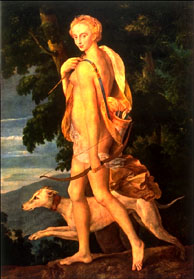"Diane Chasseresse," School of Fontainebleau.
The painting shows Diana while hunting. The peculiar crescent moon on her forehead symbolizes her being a moon goddess.
Click on image for full size
The Nelson-Atkins Museum of Art, Kansas City, Missouri. (Purchase: Nelson Trust).
Diana
Diana was an ancient Italian goddess of woodland. In Capua and in Aricia, a locality near Rome, there are still shrines dedicated to the old Italian goddess. Her shrine in Aricia was on the shores of the lake Nemi. For that reason, she was named Diana Nemorensis, Diana of the Woods. The rites dedicated to her were particularly brutal.
Human sacrifices were offered to the indigenous goddess. Diana's priest was an escaped slave. Every new priest had to kill their predecessors to obtain their offices. At Capua, people believed that the preservation of the city depended on the fate of a long-lived hind sacred to the goddess.
As the result of the influence of the Greek colonies in southern Italy
around the sixth century BC, Diana became identified with the Greek goddess of
woodland Artemis acquiring the attributes of this latter. For the Greeks, Artemis was also the personification of the Moon and her twin brother Apollo was associated with the Sun. Her father and mother were Jupiter and Latona.
Diana believed her virgin body was very sacred and not for a male's eyes. One day the hunter, Actaeon, was wandering around and stumbled upon Diana bathing. Diana became so angry, she turned Actaeon into a stag. Now he was unable to speak, and so no one would ever hear about Diana's naked body. Actaeon was killed by his own hunting dogs, because he couldn't tell them he was their master.
You might also be interested in:
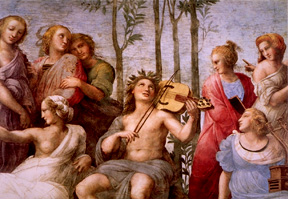
In Greek mythology, Apollo was the son of Zeus (Jupiter) and Leto (Letona). He was the twin brother of the goddess Artemis. He was the god of the Sun, logic, and reason, and was also a fine musician and
...more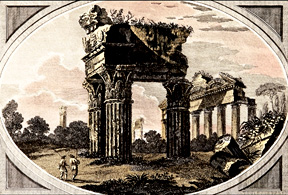
In Roman mythology, Jupiter (Zeus in Greek mythology) was the king of heaven and Earth and of all the Olympian gods. He was also known as the god of justice. He was named king of the gods in the special
...more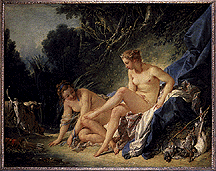
Callisto was a river nymph, descended from the river god Inachus,TBD. Callisto was the favorite companion of the goddess Diana. She accompanied Diana on the hunt and attended her at her bath after the
...more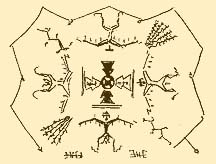
Ahsonnutli was the sky father and chief deity of the Navajo Indians. He created heaven, Earth, and the sky. Each of the four cardinal directions was supported by a giant. Each direction was also associated
...more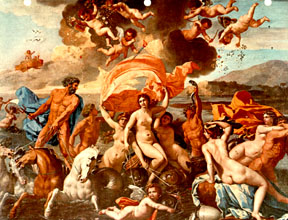
Amphitrite was one of the fifty Nereids, the attendants of the sea-god Poseidon. Poseidon (Neptune) had fallen in love with Amphitrite after seeing her dancing on the island of Naxos. Amphitrite rejected
...more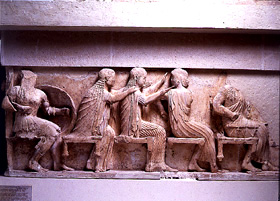
Aphrodite was the Greek goddess of love and beauty. She was known to the Romans as Venus. There were actually two different Aphrodites, one was the daughter of Uranus, the other the daughter of Zeus and
...more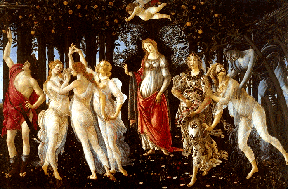
In Greek mythology, Apollo was the son of Jupiter(in Greek Zeus) and Leto (Letona). He was the god of the Sun, logic, and reason, and was also a fine musician and healer. Leto travelled all over Greece
...more


